- 6 Realistic Scenarios
- 5 Localized Markets
- <30min Guided VR Module
HILTI aimed to modernize their passive firestop training by introducing a VR experience that lets engineers actively assess layout challenges. The objective was to create an intuitive, guided simulation that fits within a 30-minute workshop slot — scalable across five localized markets.
I initiated the concept and led the interaction design as UX Lead — and later took over as Design Team Lead and Acting Creative Director. initiated the concept and led the interaction design as UX Lead, eventually becoming Design Team Lead and Acting Creative Director. I also took on Product Owner responsibilities together with the Development Team Lead — structuring the agile delivery system, writing tickets, and aligning UX, tech, and 3D teams for smooth execution.
This case required clarity more than complexity — both in the product, and in the way we worked.
When I joined, the project had been in development for over nine months — without structure or a clear understanding of how Hilti planned to use it. I reframed the concept based on the real training context, defined the interaction and learning logic, and led a small team through production. We delivered a working, field-ready product in under five months.
"
The new Firestop Training transforms how engineers learn — it bridges complex regulation with real-world experience. We’ve never had
this kind of retention before.
—
Ralph Zeller
HILTI Community Engineer
HILTI's established firestop training workshop combined code-based theory with a shared physical wall for hands-on demonstrations. While effective at showing core principles, the format had systemic limits that reduced individual learning depth, repeatability, and scalability.
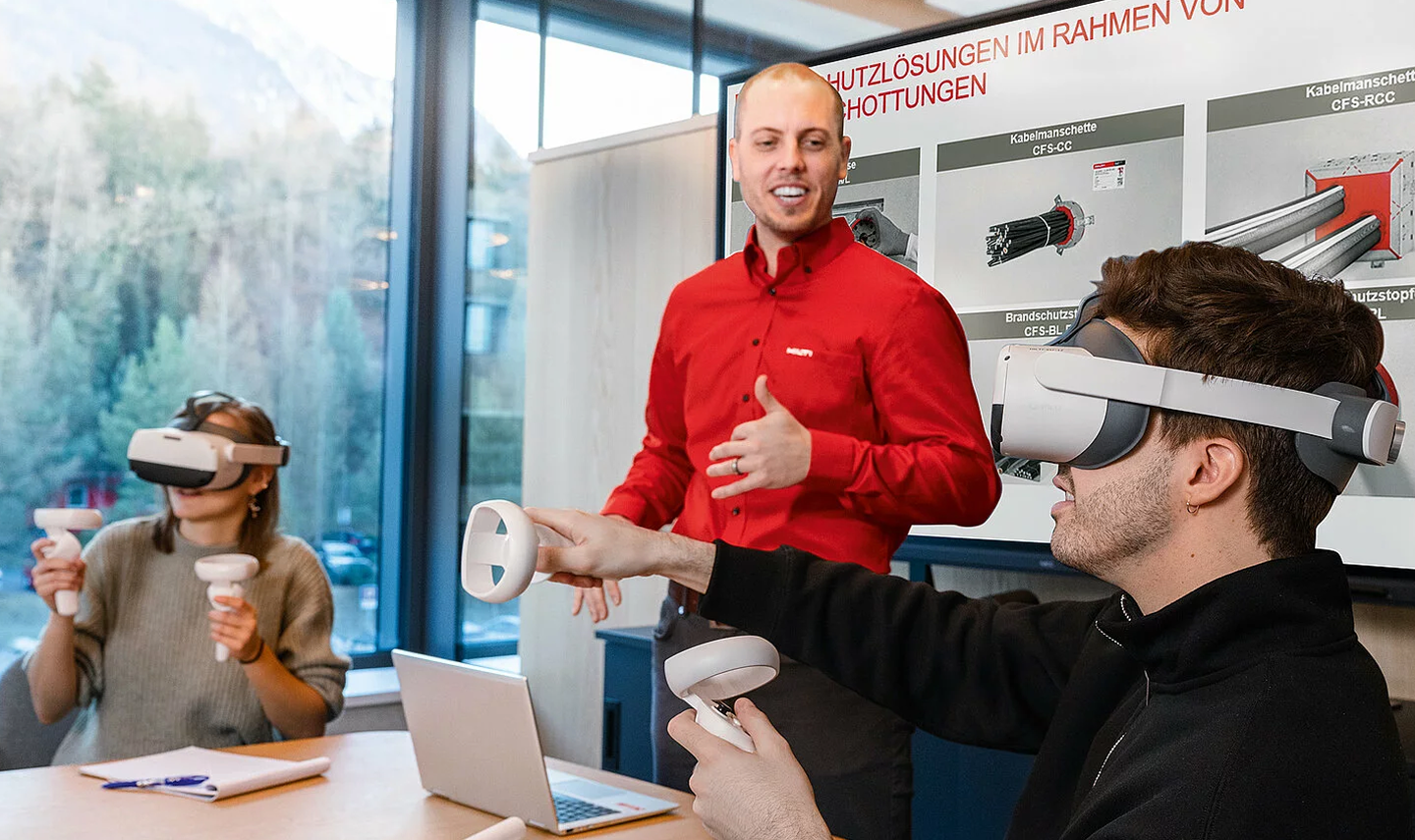
Engineers experiencing the first generation of VR firestop training — still shared, still linear.
Source: https://reports.hilti.group/2023/our-stories/firestop-meets-virtual-reality
The challenge: maintain realism and product fidelity.
Give each engineer structured, repeatable layout training
– without adding (logistical) friction.
The challenge wasn’t just replacing a physical wall. It was about creating a structured, repeatable learning experience—where engineers actively apply layout logic instead of passively observing. The VR module had to follow the real-world decision flow: observe, assess, apply. It had to mirror Hilti’s planning logic without turning into a software tutorial.
This concept visual framed that shift early on. It helped align team and stakeholders around a shared understanding of both the problem—and the kind of solution we needed to build.
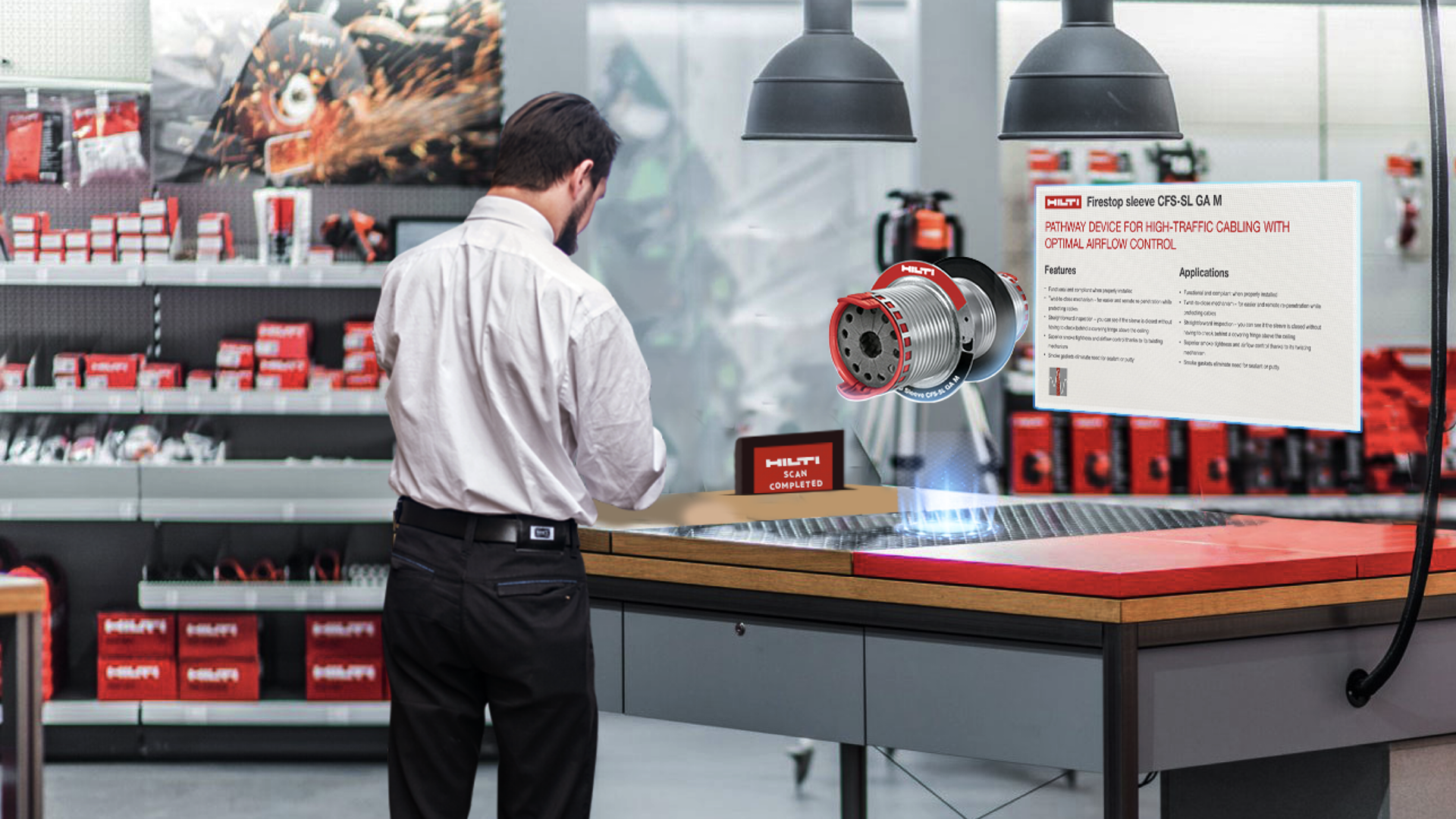
Key visual from the initial concept pitch — simulating product logic: measure, verify, and check out the correct Hilti product for the job.
Expanding HILTI's Passive Firestop Training with VR means creating an interactive, hands-on experience that seamlessly fit into the workshop ensuring engineers could intuitively apply firestop planning in a dynamic, time-efficient way.
We designed the VR experience around a repeatable interaction loop that supports both learning and task completion — even for first-time VR users.
Each scenario uses this rhythm to structure decision-making:
The loop repeats across six scenarios with increasing variation, reinforcing memory through active application instead of instruction.
The result: engineers engage in firestop planning logic through intuitive action — not passive observation.

Engineers repeat this pattern across six scenarios — guided by EVA, using intuitive actions to collect, verify, and apply layout knowledge.
This storyboard shows how EVA structures user attention, interaction, and task completion — transforming abstract planning into embodied decision-making. The loop plays out across each scenario through structured guidance from EVA, voice prompts, and hands-on interaction.
Here’s how it unfolds in practice — from briefing to layout confirmation:

1)
EVA briefs the scenario using voice cues.
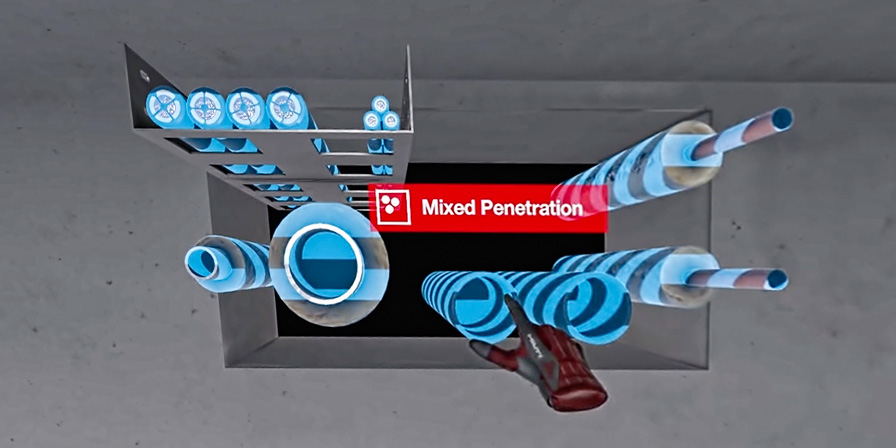
2)
Visual highlights focus the user on key materials.
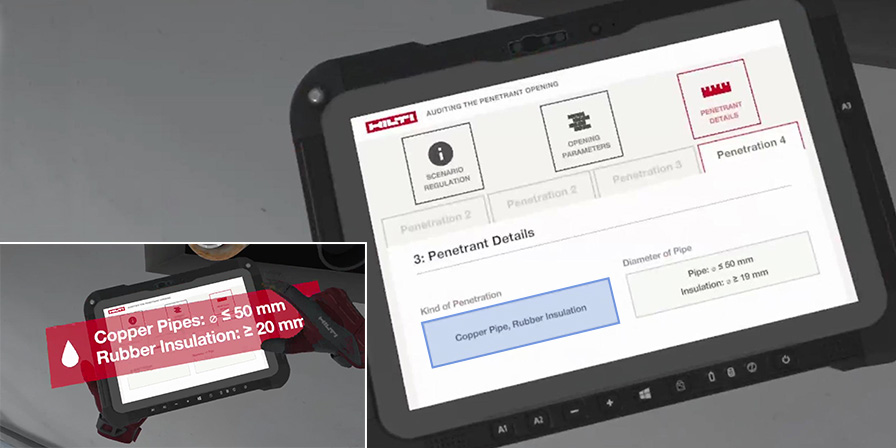
3)
User collects and verifies data via interactive tablet.

4)
Information is stored and applied at the workstation.
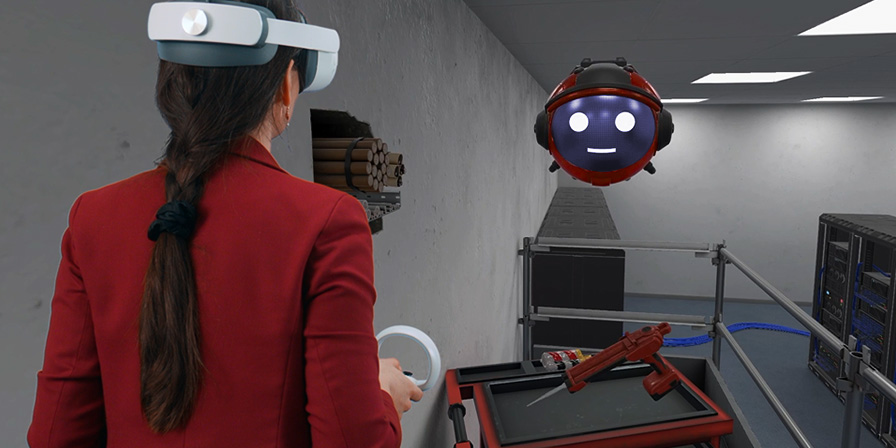
5)
User acts hands-on, sealing the correct location.
To bridge the gap between complex firestop rules
and intuitive action, we translated real-world gestures
into VR interactions — making spatial logic
feel immediate, not foreign.
Many engineers had never used VR before — the biggest challenge was making interactions feel instantly understandable without sacrificing realism.

Tapping an edge instantly reveals its dimensions.

Touching any surface reveals its material.

A quick knock reveals what’s inside a pipe or cable.
The VR module made it easier for engineers to understand which details matter — and why.
Instead of passively memorizing rules, they explored a guided scenario: touching walls, pipes, and openings to collect key information. If something was missed or entered incorrectly, the system reacted immediately — without blocking progress. Once the full picture was gathered, the application suggested matching firestop products based on that input.
The experience didn’t try to simulate every site detail. It focused on the decision points engineers deal with: what to check, what to document, and what happens if you don’t.